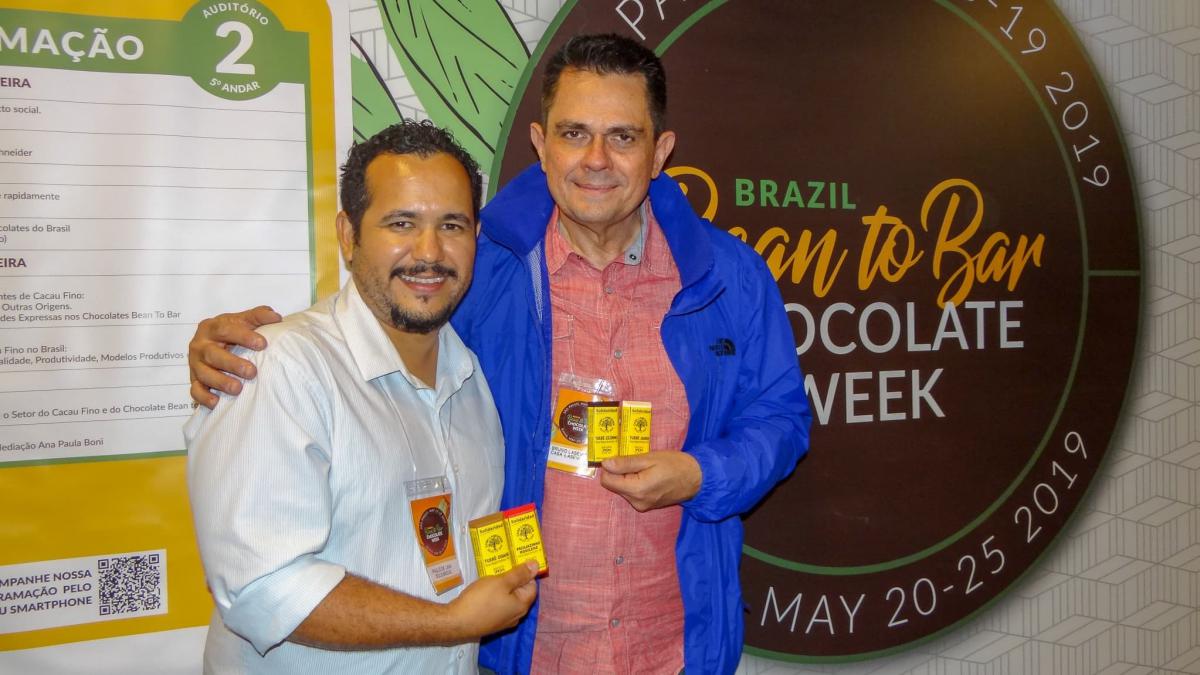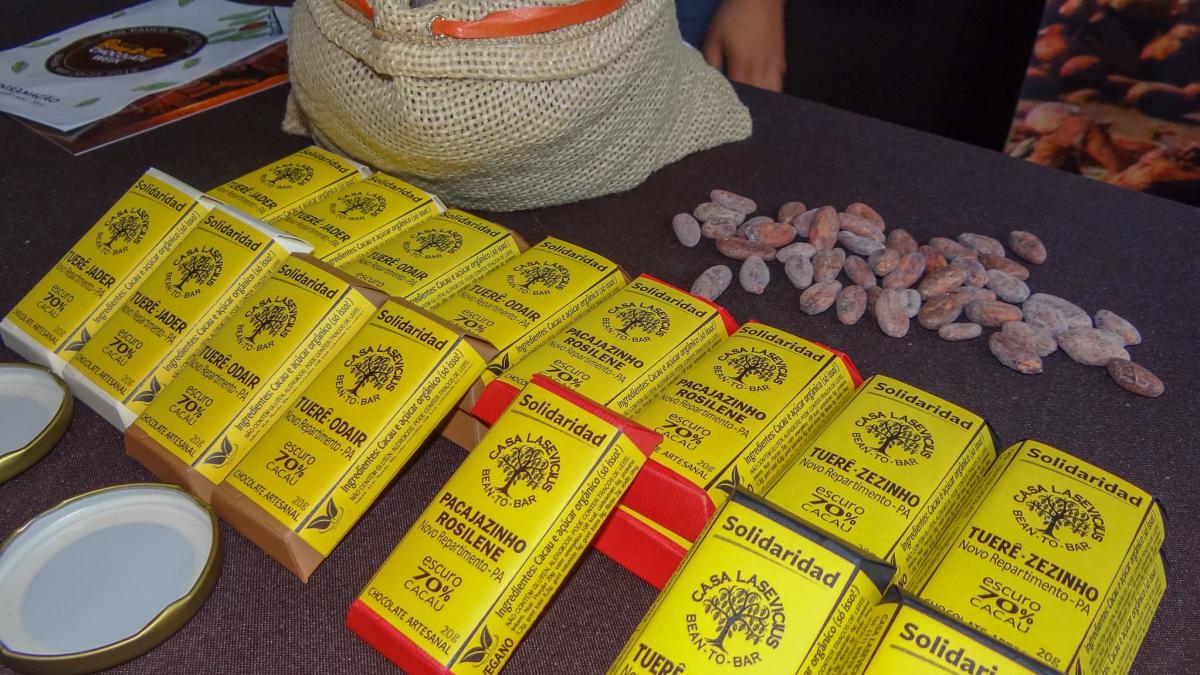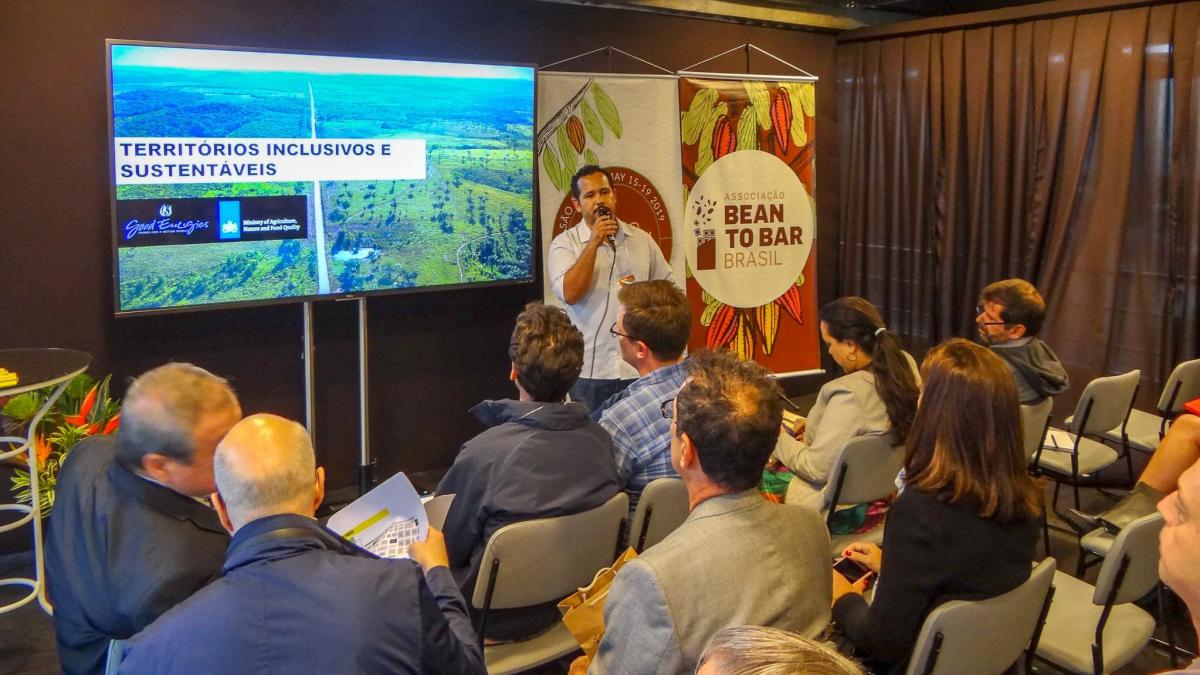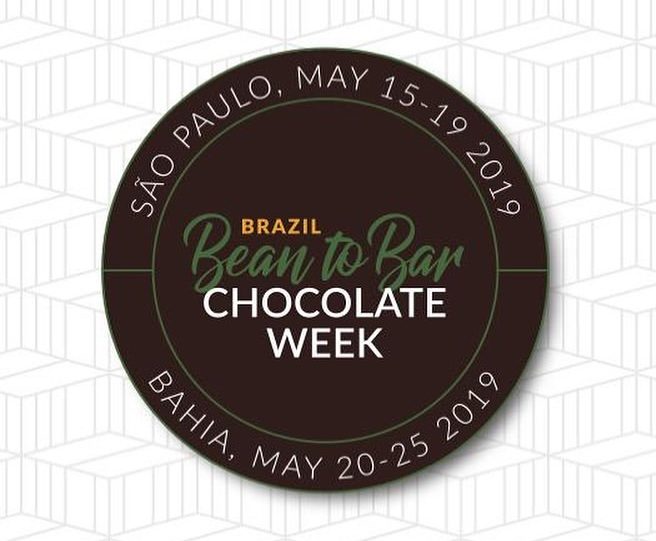Solidaridad and Casa Lasevicius chocolateria launched a new terroir of fine chocolates from the region of Tuerê settlement, in Novo Repartimento, Pará (Brazil), with 70% cacao. Jader, Odair, Rosilene and Zezinho farms produced the first batch of special almonds for the chocolate. The expectation is that, by 2020, some 20 Tuerê producers will be engaged in the bean to bar market.
Solidaridad has promoted low-carbon family farming in Tuerê – one of the largest settlements in the world, with 170,000 hectares and 3,100 families – since 2015. Local experts help to ensure that livestock farming does not advance in forest areas and that cacao, native to the Amazon, can become their main source of income.
Supporting new avenues of trade
During the event in May, the Coordinator of Agricultural Projects of Solidaridad in Brazil, Paulo Lima, spoke about the potential of the project for the Bean to Bar market. "This is a great opportunity to increase producers’ income because the bean to bar market pays better for almonds, on average four times more, and contributes to the social development of families and the environmental preservation of the region," he said. The Government of Pará invited Solidaridad to join their booth at the event to present the chocolates to potential buyers.
Solidaridad 's work is based on empowering producers with specialized knowledge about the market potential of their almonds and how agricultural practices affect their quality.
Every year, more producers invest in processing infrastructure for fermentation and drying. The expectation is to reach at least ten farmers producing fine almonds by the end of the year and another ten by 2020. – Paulo Lima, Coordinator of Agricultural Projects
For Lima, the Bean to Bar market offers farmers the chance to take a fresh look at their own business. "They usually sell to the middleman, who in turn sells to another middleman and, in the end, does not get a return as good as he could. Now we have the chance to generate more income and change their reality."
In order to diversify and improve the genetic material used for premium cocoa, and to consolidate Tuerê's reputation as a terroir of fine chocolates in Brazil, Solidaridad will begin identifying new varieties native to the region, starting at the Tocantins River floodplain.
>> Read more on how the Bean to Bar chocolate from Tuerê settlers reached the Salon du Chocolat

Setting a tasty example
The founder of Casa Lasevicius, Bruno Lasevicius, believes that with better results, more producers will be encouraged to produce quality almonds. "We prioritize the gastronomic value of chocolate, that is, the pleasure it gives to those who consume it. But if it is produced in a way that protects the forests, it gains much more value," he noted.
According to Luciana Centeno, market coordinator the Economic Development, Mining and Energy Secretariat (Sedeme) of Pará, "our proposal is to create consumer markets for our producers." Almost 90% of cocoa production in Pará is concentrated in the region of Transamazônica, she said.
Looking back at the bean to bar movement
The concept “bean to bar” was created in 1997 in San Francisco, by a group of small chocolate brands that promoted artisan production of chocolate from the cocoa bean to the bar. It takes into account not only product quality but issues such as environmental preservation and appreciation of the work of rural producers.
“Terroir” means the set of lands in a region from the point of view of its agricultural aptitude and the characteristics of the products it supplies. These are called "terroir products". Not only wine but also cheeses, sausages, jellies, chocolates, spices, honey and food in general. What they have in common is respect for the excellence of the product and the identity of its place of origin.



